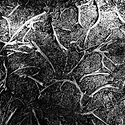Well, if you expose at box speed and you're happy with their results, that's all that really matters. At that point, what developer they use is a bit of a moot point. If you're not happy with their results, then identify exactly what you're not happy with and see if it's something that they can address with either a different developer, or a different processing time, or maybe even you exposing the film differently. What you're not happy with will guide that course of action.
While I do offer the ability to ask for a specific developer with my lab, I've found that the vast majority of people who send film in just don't care what developer I use. They just want usable pictures, and trust that I'll do the right thing to produce that. The ones that do ask usually are just asking out of curiosity. The ones that really care about developers tend to process their own film. Every once in a while I'll get somebody who sends film in and is absolutely anal retentive about the developer and development process. While I'm happy to have their business because money is money, at the same time, I'm not going to lose any sleep over not having them as a customer, as it's not uncommon for those types of customers to chew up a huge amount of your time just dealing with them in general.










